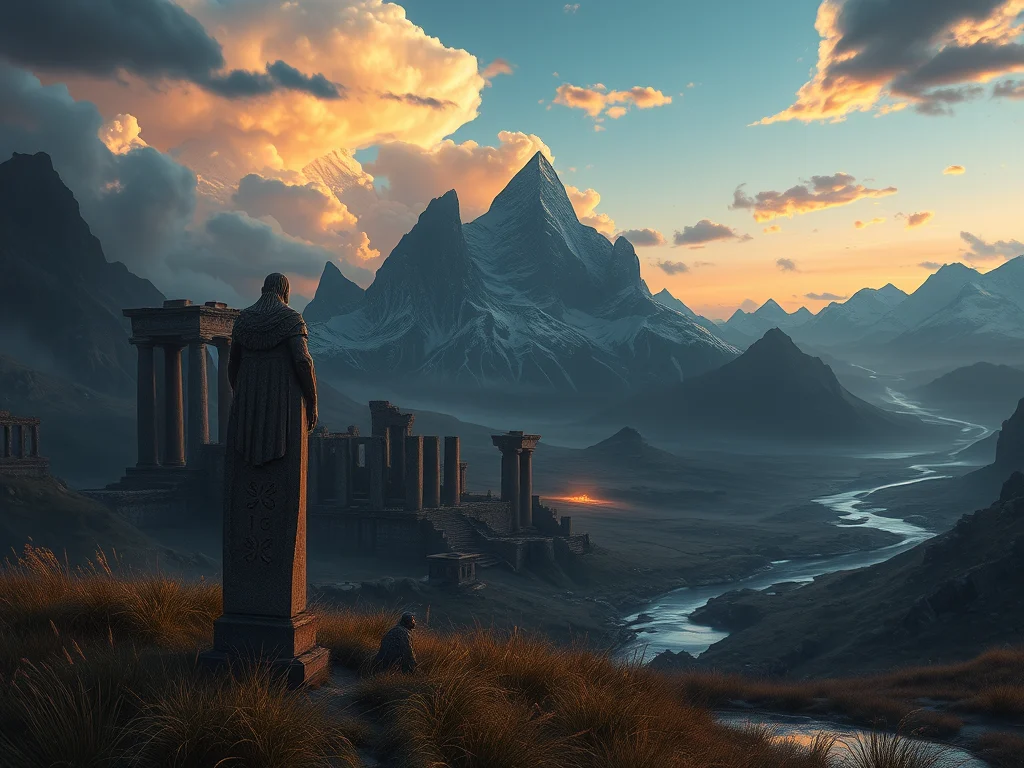Children of Flame and Flesh, Scions of the Second Breath
The Dragonborn of Khassid are a young and enigmatic people, their origins entwined with the reawakening of draconic power in the Second Epoch. Unlike the native peoples of Khassid, the Dragonborn did not walk the world until the Age of Flame was well underway. They are not of the First World, nor born of the gods, but are living echoes of the ancient pacts, passions, and perils that followed the rise of the dragons.
Origins: Born of Fire and Union
The first true dragon appeared on Khassid in 1684 AE, a red wyrm of devastating power whose coming marked a turning point in the world’s history. For centuries after the Cataclysm, dragons were unknown, feared only in rumor and old myth. But when flame-blackened wings shadowed the lands once more, the world remembered.
In the centuries that followed, dragons of many kinds emerged—chromatic and metallic, elemental and astral. Some warred, some watched, and some, ever mysterious, sought communion with mortals. From these rare unions—whether through blood, sorcery, or divine intercession—the first Dragonborn were conceived. They were not born immediately, but gradually, as mortals and dragons found reasons to align, to love, or to bargain.
It was not until roughly 2200 AE, over five centuries after the dragons’ return, that the first generation of Dragonborn came into being in notable numbers. Scholars call this era the Second Breath, a time of renewed draconic influence, but also of mortal adaptation and transformation.
A People Without a Homeland
Dragonborn have no ancestral homeland in Khassid. They are scattered, their lineage tied more to the nature of their draconic ancestor than to any one region. A Dragonborn born of a bronze dragon might hail from the coastal cities, while one touched by a black dragon may emerge from the deep swamps of the south. This has led to a people whose culture is adaptive, fluid, and shaped by local customs, yet always tinged by the pride and intensity of their draconic blood.
Heritage and Legacy
Dragonborn often face suspicion or reverence, depending on where they are born and whom they resemble. In some lands, they are seen as omens—bearers of power or destruction. In others, they are tools or curiosities, sought after for their rumored connection to ancient dragons.
Yet among themselves, Dragonborn are deeply introspective. They often carry the “Memory of Flame”—a spiritual belief that within them resides not just the power of a dragon, but a fragment of its purpose. Whether they embrace that purpose or rebel against it shapes their path.
Faith and Flame
Some Dragonborn worship the draconic beings who sired their lines. Others turn to gods of fire, fate, or rebirth. A few even claim that dragons are not merely beasts or deific avatars—but remnants of a primordial truth, older than gods or spheres, who awaken only when the world needs—or fears—them most.
Dragonborn Today
In this current age of Khassid, Dragonborn stand at a crossroads. Neither fully mortal nor fully draconic, they seek meaning in a world that did not shape itself with them in mind. Some become adventurers, drawn to the promise of carving a place for themselves. Others become emissaries between dragonkind and the mortal races. A few isolate themselves, seeking to master the draconic essence within.
Whatever path they walk, the Dragonborn are living proof that the world is still changing—that new peoples can be born not of old covenants, but of fire, fate, and choice.
